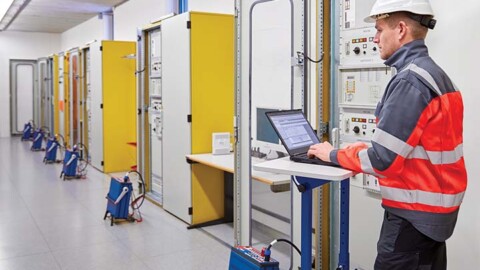Electric vehicle (EV) adoption in Australia is on the up, but it’s still some way behind global trends. EVs accounted for just two per cent of Australia’s new car sales in 2021, compared to 17 per cent in Europe and nine per cent globally. As these trends continue, fleet owners will need to arm themselves with the right knowledge and equipment to make the most of the benefits EVs have to offer.
Australia is now following the path of governments around the world and the EV market will soon feel the benefit of additional incentives. Import taxes on EVs are to be scrapped, plus a Fringe Benefits Tax exemption will make EVs a more economic choice for businesses and their employees.
The financial benefits of EVs will therefore become increasingly apparent to fleet owners, but to transition, they’ll need to think beyond just the purchase of EVs or the demands of the current fleet. Ensuring fleets carrying out mission-critical services are powered by reliable and scalable infrastructure is essential. There are a number of crucial elements to any fleet electrification project:
Fleet usage
Firstly, the existing fleet’s operating pattern and usage of a site needs to be assessed. This might include metrics such as the anticipated daily mileage of the vehicles, travel routes, dwell time and details of the proposed vehicle models.
Scalability is also vital. An electric fleet is likely to grow significantly over time, and the infrastructure needs to be able to integrate vehicles now and well into the future, or risk costly adjustments.
Energy capacity
It’s important to check that the energy capacity is sufficient to power the required charging infrastructure. A site review should be conducted to determine how many metered supplies exist, the capacity of each, and how they are configured. Simulations should be run to understand how many vehicles can be charged with the available energy supply and when a grid upgrade will be required.
Larger vehicles like buses and trucks will likely need robust site designs and grid upgrades, coupled with smart solutions for load management, so getting the infrastructure design right at the outset is vital.
Charging hardware
Technology evolves quickly, so the hardware (chargers) must be interoperable as the industry develops. While AC chargers can be an effective solution for car, van and some six-wheeler truck fleets that are operating one wave of trips a day, bus and most truck operators are now opting for DC to provide greater scalability, charging speed and future-proofing. The right solution also depends on whether the vehicles can rely solely on overnight charging or require opportunity and/or destination charging.
Management software
Fleet owners need a charge point management system that can integrate new vehicles. The right software helps operators manage fleets profitably and reliably, with access to real-time data. Using hardware-agnostic management software will mean it is compatible with chargers from different manufacturers. Higher-quality software can also manage charging scheduling and optimisation, integration with telematics, smart meters, billing systems, and the smart grid.
Operations and maintenance
Finally, operators need reliable third-party partners for ongoing hardware maintenance, preferably who can carry out remote monitoring and diagnostics via management software. They must look at the response time maintenance partners will commit to and check they have enough trained engineers in place across all the geographies they operate in.
The move to EVs will be good for business, as well as the planet. But it’s important that operators move quickly and plan carefully to ensure charging infrastructure can adapt to growing fleet demands.
This sponsored editorial was brought to you by Greentech Sydney. Speak with Greentech Sydney today to learn more about EV Chargers. Call (02) 9980 7580

















